The 25 Best Things to Do in Cambodia All Year Round
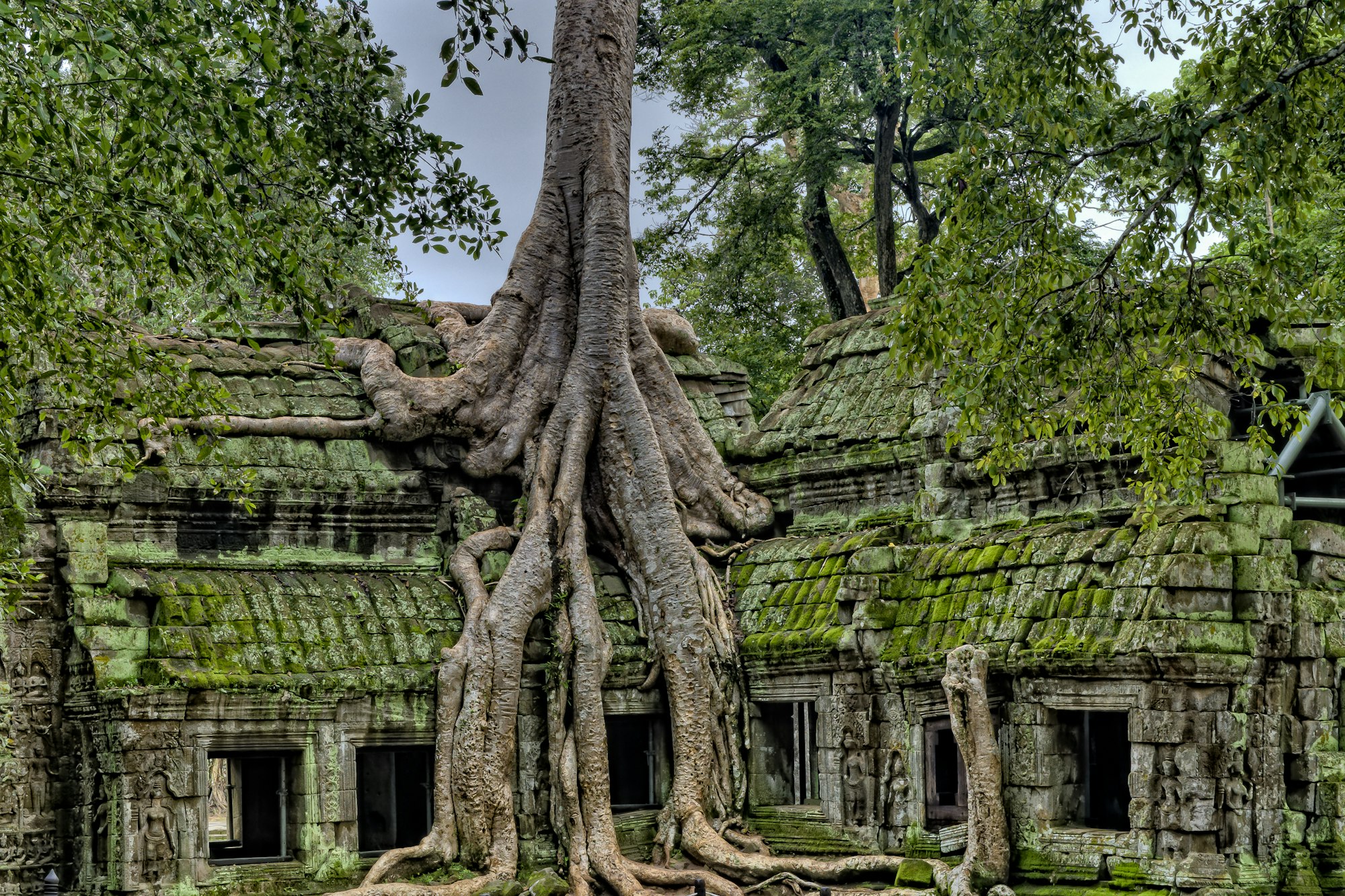
Of all the things we expected to do and see in Cambodia, being shocked, heartbroken and speechless, was never part of our itinerary.
Cambodia has a history that is both glorious and horrifying in equal measure. Once the head of an empire that stretched out across the entire region, the immense ancient Khmer temples of Angkor serve as a reminder of past glories. The religious site is still a huge source of national pride today.
On the other end of the scale, haunting reminders of the atrocities committed by the Khmer Rouge in the 1970s are presented in considered detail at the Killing Fields, Tuol Sleng Genocide Museum and elsewhere throughout the country.
These sites, alongside many other must-see places, are the main things to do in Cambodia that you don't want to miss.
Bookings: Some of the links in this article are affiliate links. This means that if you choose to make a booking, we will receive a small commission at no extra cost to you. Thank You!
The 25 best things to do in Cambodia

You'll find present-day Cambodia accepting of the decades of brutality, bloodshed and poverty and firmly focusing on a bright new future.
This is a place that maintains a relaxed and happy vibe alongside an increasingly faster pace of life. And it will live long in your memory thanks to its friendly and genuine people.
Here's our take on the 25 best things to do in Cambodia.
1. Tour the amazing Angkor Temple complex
Siem Reap is one of the most popular places to visit Cambodia and the number 1 location for an easy visit to the Angkor temples. Being located so close to the most sacred monuments of the country, the city has a surprisingly vibrant atmosphere.
You've probably seen a post telling you that seeing Angkor Wat and the rest of the Angkor temples is one of the top things to do in Cambodia. And to be completely honest, it is. Don't believe those who say it's not worth visiting the site. Go and see it for yourself.
With over 70 temples of all shapes and sizes, the complex is absolutely incredible. And your trip to Cambodia will not be complete without exploring at least one of them.
We dedicated 3 full days to exploring the Angkor temples and it was one of the most mesmerising experiences in Cambodia. We've written a handy guide on how to tour Angkor if you are thinking of seeing more than just Angkor Wat.
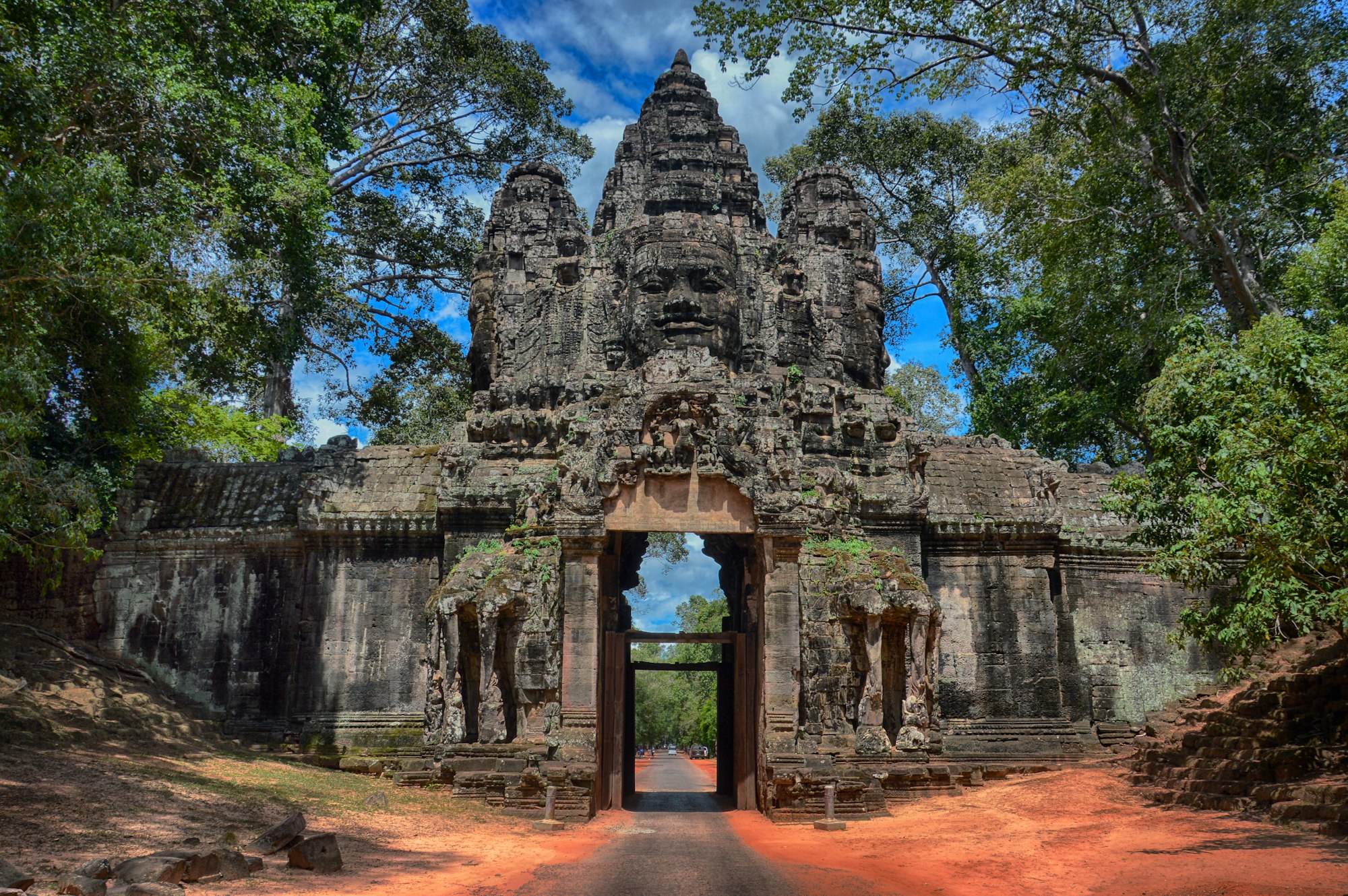
If you have little time in Siem Reap, the below three temples are must-see places in Cambodia.
2. Explore Angkor Wat, Cambodia's must-see attraction

Often seen in postcards, the towers of Angkor Wat are even more impressive in real life. Built in the early 12th century, it's one of the biggest secret sites in Cambodia.
You'll want to spare at least 2-4 hours if not more to explore the temple and take photos. Also, the queue to the towers can be lengthy. To fully appreciate the temple, take regular breaks to rest.
Lean against the cool 900-year-old structure, look around you, don't rush, and take your time to absorb the atmosphere.
The best time to visit Angkor Wat is to either come early and catch the breathtaking sunrise over the temple or later in the afternoon/evening. The wat looks as stunning in the golden light at sunset as it does early in the morning.
Make sure to dress appropriately, and cover your knees and shoulders. The dress code for Angkor Wat is extremely strict.
3. Look for secret relics at Ta Prohm
Even if you never watched Lara Croft: Tomb Raider starring Angelina Jolie or played the famous video game, Ta Prohm will capture your imagination. Used as the atmospheric backdrop for the film, the temple is one of the most visited places in Cambodia.
Completed in 1186, Ta Prohm is best known for its unusual appearance - a huge tree growing right through the temple. Even though the ancient monument has been partially restored and strengthened to make it easier for visitors to access the site, it's still fragile. Please don't try to climb it for a photo.
As one of the most enchanting and atmospheric things to do in Cambodia, combine your Angkor Wat visit with Ta Prohm and Bayon temples.
4. Come face to face with the smiling giants at Bayon Temple

Located in the small circuit together with Angkor Wat and Ta Prohm, the 12th-century Bayon temple is absolutely worth your time.
As you walk around the upper level of the temples, you'll find yourself surrounded by the giants carved out of stone. Spooky and atmospheric. Come face to face with the smiling faces and then decide if it's a happy or a sinister smile.
5. Sip cocktails in Siem Reap
If you are thinking of what to do in Siem Reap besides temples, there's plenty. You can go explore the excellent Khmer food scene, take a day trip to Phnom Kulen waterfall, have a romantic sunset tour and visit floating villages.
Or you can sip cocktails on the famous Pub Street.
We didn’t expect Siem Reap to be such a party town. But it is and the famous Pub Street is home to many restaurants, bars and clubs with music blasting out loud.
Along the streets, you'll have carts tangled up with flashy LED lights and stocked with bottles of all kinds of alcohol. Some of the cocktails were quite weak but we did enjoy the fun and friendly atmosphere.
6. Taste delightful Khmer dishes

For a more sophisticated evening in the city, enjoy a quieter meal in one of the many lovely restaurants just a few streets away from Pub Street. Opt for the traditional Khmer cuisine and their fantastic curries. Pair it with a pint for a hearty dinner out.
Check out the Khmer Kitchen in the Alley West. When ordering the amazing coconut fish (Fish Amok) or baked pumpkin soup, keep in mind it’s not a soup, it’s curry so accept (unlimited) rice offered by the waiter.
7. Cook up a hearty Cambodian Feast
Alternatively, for hands-on things to do in Cambodia, eat what you cook! Join this excellent cooking class and, accompanied by a local chef, learn how to cook a traditional Cambodian meal.
From our own experience, joining a cooking class in SE Asia is always enjoyable because it offers a unique insight into the authentic local cuisine and food culture. And you get to eat amazing home-cooked food that you made yourself.

As far as fun things to do in Siem Reap go, this one is the most entertaining, if you love cooking. More so, you get to cook in a local village just outside Siem Reap, which makes the whole experience even more enjoyable.
8. See the spectacular bat show in Battambang

Despite being the 2nd largest ‘city’ in Cambodia with a population of around 200,000, Battambang is a relatively laid-back place compared to buzzy Phnom Penh or nearby Siem Reap.
Central Battambang (pronounced Battambong) is easy to navigate being laid out in a series of streets running parallel with the Sangkae River.
Things to do in Battambang include visiting the beautiful Sala Khaet (Lord Governor’s Palace), the Battambang Museum and the mighty statue of Ta Dumbong at the eastern end of town where locals come to worship him.
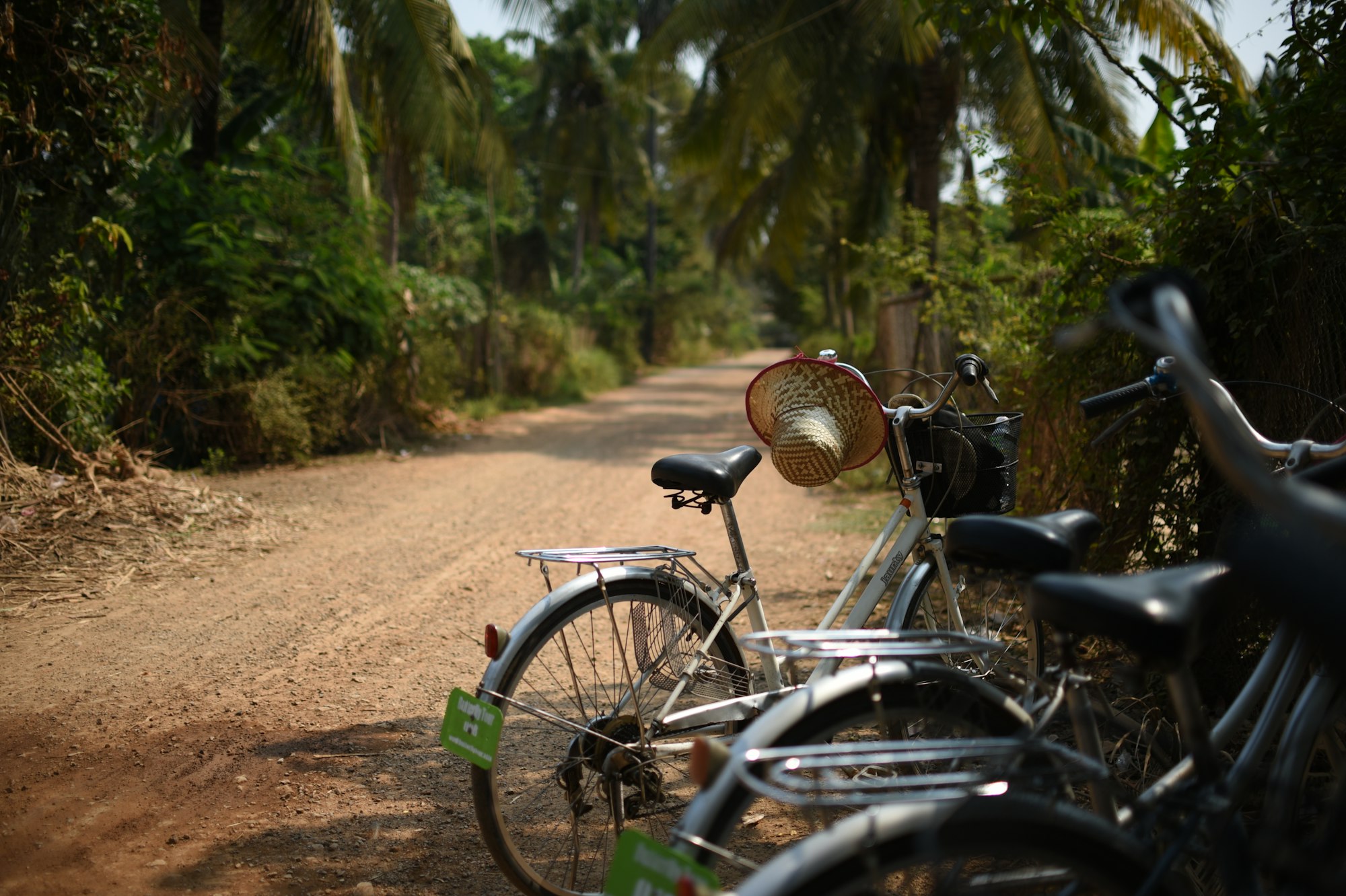
But the most impressive of all the things to see in Battambang is the bat show at dusk. For a spectacular end to your day in the Cambodian countryside finish up at the Bat Cave.
Each night millions of bats fly out of the cave at sunset towards the local lake. It’s an amazing sight to behold.
9. Explore the Phnom Sampeou Mountain (Killing Cave)
When visiting Battambang, hire your own motorbike or a Tuk Tuk (remorque) with a driver/guide to explore. There’s generally more to see in the surrounding countryside than in the town itself.
This way you'll have an epic day out exploring the local fishing villages, a winery (yes really), fruit bats, Banan Temple, and the famous Phnom Sampeou Mountain (Killing Cave).
The picturesque Phnom Sampeou Mountain today is known as the grim execution site. It's one of the places in Cambodia where people were killed during the Khmer Rouge regime. The victims were murdered at the top of the cave and then thrown into the grotto through the natural skylight.
As you descend into the large cave, you'll see a glass memorial with human remains as well as a cage made from chicken bones filled with skulls and bones of the victims.
10. Ride the ingenious Bamboo Train

On a cheerier note, one of the most fun things to do in Cambodia that you don't want to miss is to ride the ingenious Bamboo Train.
Located around 20 km from central Battambang, it's a collection of small bamboo motorised platforms which run up and down a long-disused rail line.
You can jump on board for a return trip for a few dollars and enjoy a 45-minute ride including a stop at the far end to turn your ‘train’ around.
If you think Battambang is too much hassle to get to on public transport, you can arrange a day tour from Siem Reap. This way, you'll get to experience all the top things to do in Battambang including a fun ride on the Bamboo Train.
11. Visit the haunting Killing Fields
Phnom Penh is a modest country capital by world standards but this just adds to its charm and chilled vibe.
There are more than enough things to do in Phnom Penh to keep you occupied for a few days. And due to the layout of Cambodia, you might find yourself back here as you explore the country.
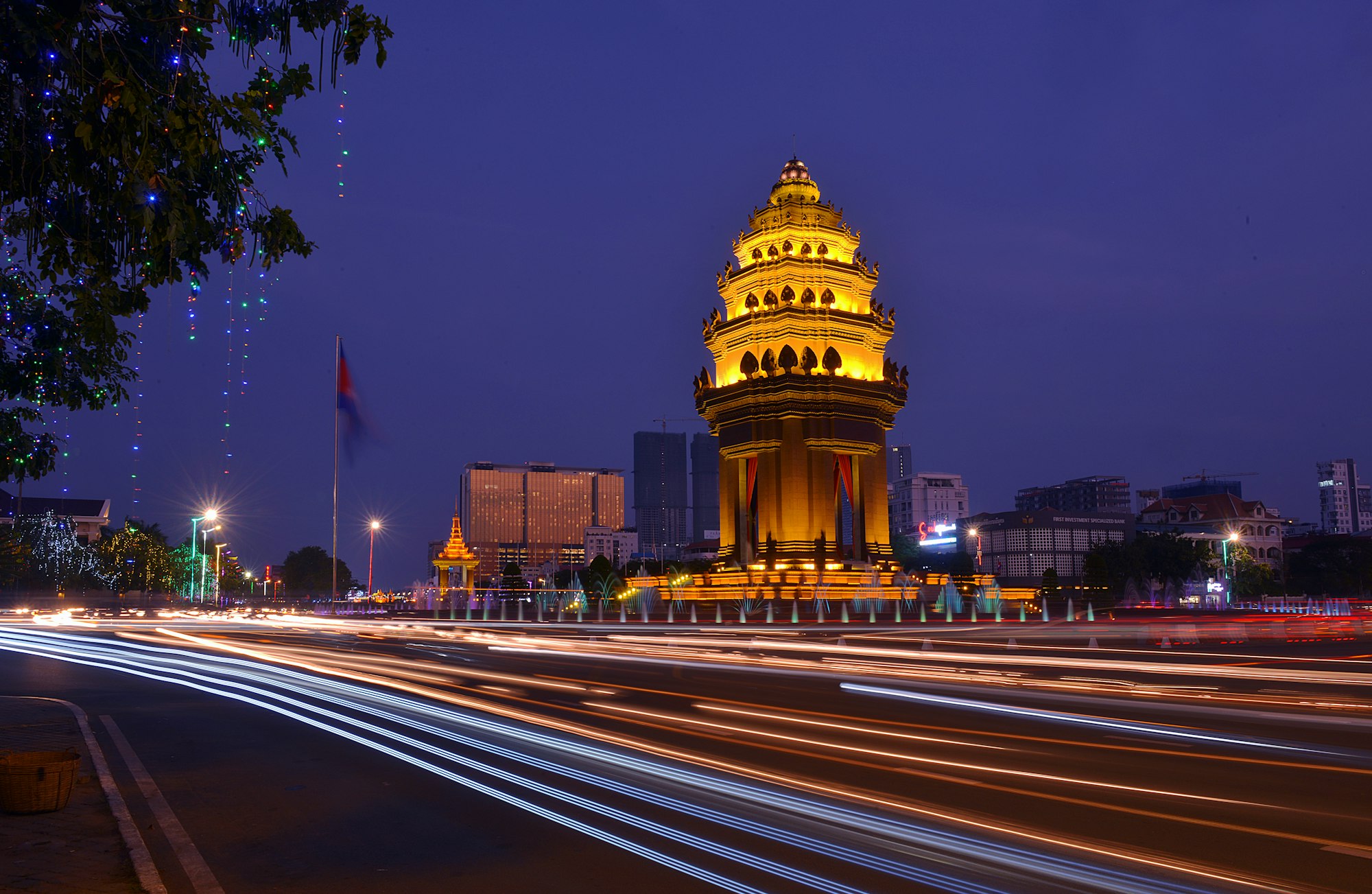
Hard to absorb but nonetheless one of the most incredible things to do in Cambodia is visiting the Killing Fields. The audio guide here graphically retells in detail the horrors which unfolded under the Khmer Rouge Regime in the 1970s.
The Killing Fields site is located around 17 km to the south so a Tuk Tuk is the way to go.
12. Learn about the genocidal crimes

Equally disturbing and hard to digest is the Tuol Sleng Museum, one of the torture sites in the city. Housed in a former school, the site was used by the Khmer Rouge to interrogate and brutally torture thousands of Cambodians and foreigners who happened to be in the country at the time.
The museum is haunting but a must-see place in Cambodia. If you can't stomach the idea of torture, leave Tuol Sleng off your top things to do in Cambodia list, but be sure to visit the Killing Fields.
It's necessary to visit at least one of these sites to understand what happened in Cambodia during the infamous Khmer Rouge regime in the not-so-distant 1970s.
13. Spend time at the National Museum in Phnom Penh
While in Phnom Penh, seek out the stunning sandstone museum. Opened in 1920, the National Museum is full of fascinating Angkor artefacts.
It's best to visit after you've been to the Angkor temple complex to better understand the history and life of the Angkorian period.
Grab an audio guide and set aside a couple of hours to explore the museum. Beware of scams on the streets. Some tuk-tuk drivers will try to defer you from visiting the museum by telling you that it's closed and offering to take you elsewhere.
Don't be fooled, the museum is open all day (check the opening hours online before visiting) and costs around $10 per person to enter.
14. Climb the Wat Phnom Temple

Aside from the gold-dusted Royal Palace, the National Museum and famous markets, another Phnom Penh highlight includes the beautiful Wat Phnom temple from which the city gets its name. It was built in 1372 and means 'Hill Temple' in the Khmer language.
It's believed that the ashes of the last Khmer king, Ponhea Yat, are still kept atop this hill. You can access the temple via a large staircase at the base of the hill guarded by lions and mythological seven-headed Nāga serpents.
It's a beautiful and peaceful site. Spend some time wandering around and maybe even ask for good luck. Many locals come to the temple to pray for blessings and leave beautiful fresh flower garlands and fruit as an offering.
15. Shop at Phsar Thmei
If you love shopping, then visiting locals markets will definitely be one of the most fun things to do in Cambodia for you. From local food, souvenirs, clothing and fake designer items to precious gemstones, you'll find it all in Phsar Thmei, Phnom Penh's Central Market.
Constructed in 1937, the Art Deco building has a beautiful supported dome making the structure a true work of art. It's clean, open all day long and offers the biggest variety of goods to browse for hours on end. Definitely one of the best places to visit in Cambodia (and Phnom Penh).
16. Have a cycling adventure
One of the best ways to see the Cambodian countryside is to hop on a bike or motorbike and explore the off-the-beaten-path.
Hopping on a bike to explore the Angkor site could also be a super fun experience. But, unless you cycle all the time, we don't recommend doing a 3-day cycling tour around the temples of Angkor. The jungle is hot and humid and getting in and out of the temples is exhausting enough in the sweaty heat.
However, a sunrise tour exploring the amazing Angkor Wat could be one of the best things to do in Cambodia. Get up early, have a hearty breakfast in the jungle and as the sun rises, catch the golden light over the iconic temple.
17. Enjoy the Cambodian dance show
From many fun things to do in Cambodia, watching a mesmerising Khmer Dance show could be the most unique experience.
One of the best classic dance shows takes place at the open-air courtyard of the National Museum in Phnom Penh. You can purchase your ticket ahead of time and spend an hour enjoying hypnotising Cambodian folk dance moves.
18. Taste the world-praised Kampot pepper

Kampot is one of the best places to visit in Cambodia for its iconic pepper. Despite being called a 'sleepy town', there's a lot to see and do in Kampot.
But the main attraction here is the various pepper farms where the famous Kampot Pepper is grown. It's used by top chefs the world over as this tiny area of Cambodia is said to produce some of the purest pepper in the world.
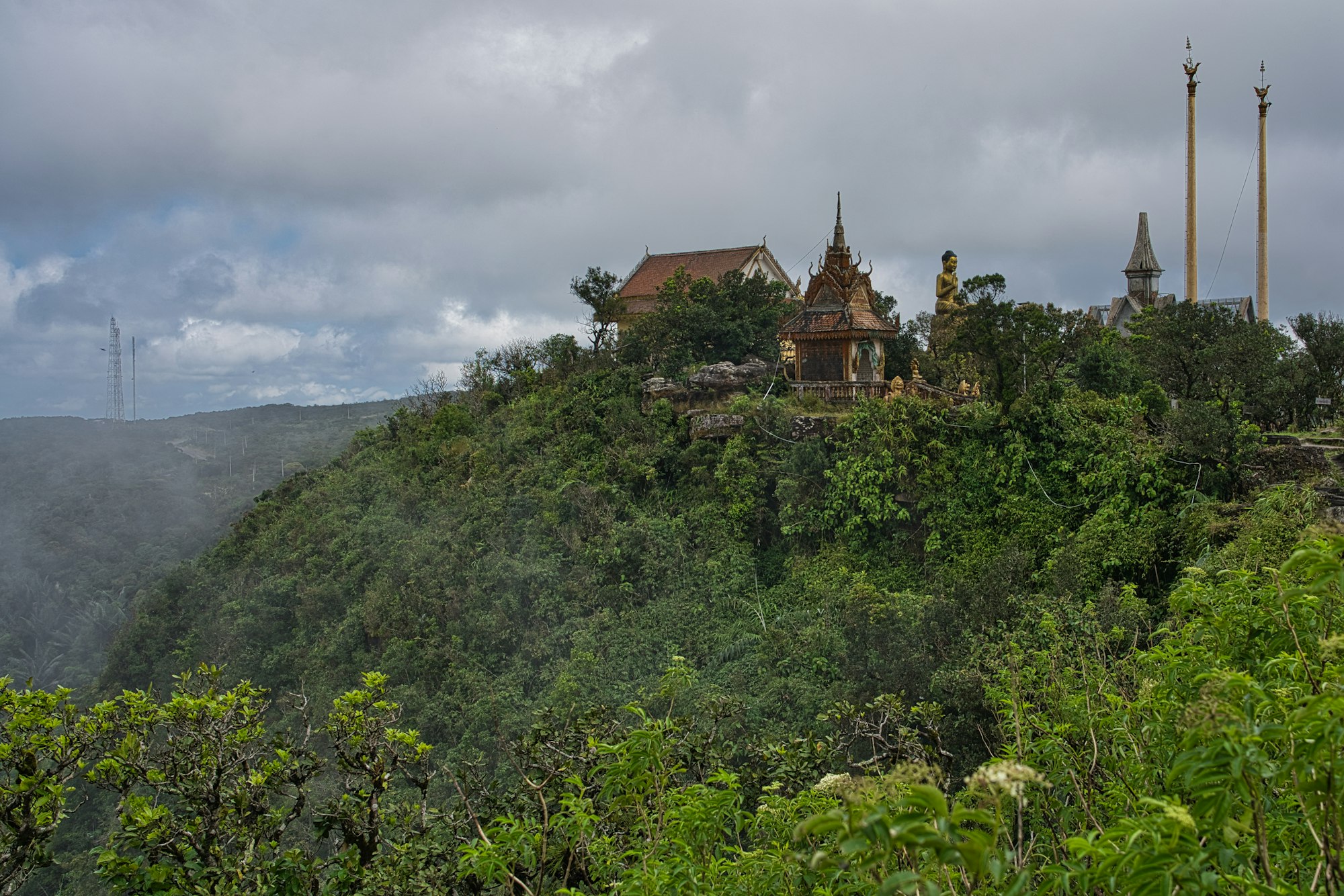
Around 20km to the east of town is La Plantation which offers short tours for free in the hope you’ll buy some of its finest pepper products. Which, we can confirm, are top-class.
La Plantation also offers hands-on cooking classes for visitors who would like to learn how to cook delicious Khmer dishes. Something to keep in mind when exploring the area.
19. Spot river dolphins in Kratie
Sitting merrily on the banks of the Mekong River in eastern Cambodia is Kratie, pronounced kra-cheh. It makes for a nice relaxing stop-off if you are heading from Phnom Penh northwards to the Laos border.
If you’re lucky you might just spy a rare Irrawaddy dolphin or two splashing around in the Mekong River just to the north of the town.
20. Relax in Kep
Just a few kilometres east along the coast from Kampot sits the peaceful town of Kep. Confusing for visitors due to the lack of any kind of centre, Kep is more of a spread-out collection of dwellings close to the shoreline.
There’s no party scene to speak of here but it’s the place to head if you’re looking for a relaxing few days in a hammock.
21. Have a beach day in Sihanoukville
Perched on a peninsula jutting out into the Gulf of Thailand are the scattered beaches of Sihanoukville with the town centre found just inland. Head here for some beach time or to simply catch the ferry to Koh Rong or the other offshore islands.
We don't recommend coming here in the wet season but the dry season will see you rolling in the warm sand, chilling out at the beach bars and enjoying beautiful sunsets.
22. Hop to Koh Rong
The same can be said about the Cambodian islands. In the dry season, the islands are stunning and could easily rival those in the south of Thailand, just not in the rain.
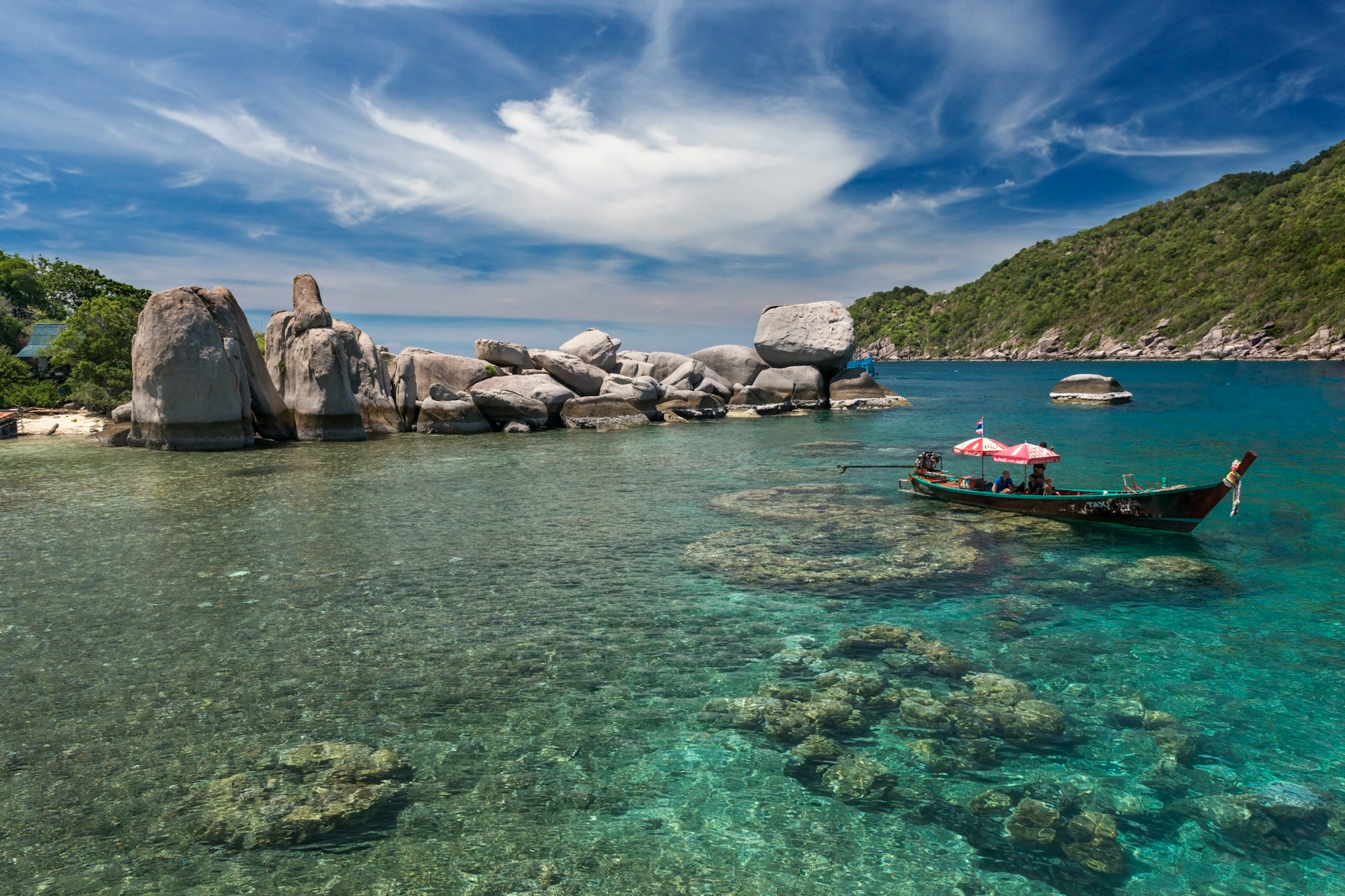
So if you’re planning a trip to the Cambodian coast outside of the wet season (October-April), don’t miss the islands.
23. Ride a Bike in the Bokor National Park

While visiting the Kampot pepper farms, stick around for another day or two to explore Kmapot's awesome sights.
One such site is the Bokor National Park. It’s worth a trip up to the Bokor Hill Station Mountain to see the spookily abandoned church, hotel and casino.
As you explore, try to locate the two-tiered secret Popokvil waterfall. It's a refreshing pitstop in the rainy season.
24. Cool down in Sen Monorom and Eastern Cambodia
Geographically divided from much of Cambodia by the Mekong River, the eastern region is often overlooked by visitors.
This makes it one of the most fascinating places to visit in Cambodia. Especially if you want to stray far from the beaten path and discover a place of varied wildlife and minority tribespeople.
This eastern region has a much cooler climate than much of the rest of Cambodia, with the provincial capital of Sen Monorom positioned at an altitude of 800m.
Despite being the largest place it is little more than a small town. But a good base from which to explore this lush and mountainous region.
The place is high in the mountains and the cooler temperatures can be a very welcome relief when travelling in South East Asia.
25. Stray off the beaten path
To see authentic Cambodia, get off the beaten path and have a wild adventure on a motorbike. Ride the dirt tracks, explore the beautiful countryside and have fun.
Renting a bike is easy and affordable in Cambodia. Just make sure to take photos of all the existing marks and scratches on your bike with your smartphone. Otherwise, you might be charged for damage you didn't cause.
If you aren't confident in riding a motorbike by yourself, join this excellent 3-hour motorbike tour and see the best of Cambodia. It's a perfect choice if you want to have a fun day out in the Cambodian countryside.
Cambodia travel tips

Money & costs
Money-saving travel tip: Make sure that you have a great Travel Credit Card to avoid a poor exchange rate and extra fees when using ATMs in Cambodia.
What's the best currency to take to Cambodia?
Cambodia uses the Cambodian Riel (KHR) as its official currency but US Dollars are accepted pretty much everywhere. You'll find that change of less than $1 USD is given in multiples of Riel (500, 1000, 2000 notes) as coins are rarely used.
Prices, particularly in tourist areas, are listed in USD making your spending very easy to calculate. To follow this practice and keep things simple we have listed all prices throughout the guide in USD.
ATMs and currency exchange
ATMs are relatively scarce outside of the main towns or the capital, so make sure you carry enough cash to tide you over until the next big stop. Most ATMs will charge a hefty fee of around $5 when you withdraw cash so it’s best to withdraw larger amounts when needed.
In Battambang, Siem Reap, Phnom Penh you’ll find several places to exchange your money. Most banks, some hotels and several exchange bureaus will offer this service but don’t forget to use a handy app like the XE Currency Exchange app to check you’re getting a decent rate on the go.
Outside of these places, it can prove more of a challenge to exchange cash so make sure you’re well stocked up before heading to more remote areas.
Cash and card payments
More businesses are starting to take card payments but cash is still king in Cambodia… no disrespect to the actual king intended. As mentioned above, make sure you carry a good stock of cash spread between you and your daypack if heading outside of the towns.
You can pay via card at many of the larger hotels and restaurants but this can carry a 3% fee which can outweigh ATM fees over time. When paying via card always remember to select the local currency option if asked for the best rate.
How much money do you need a day in Cambodia?
Backpacker: If you stay in dorm rooms, eat street food, the occasional beer and just take public transport then you can survive on $15 or less a day. However, you can’t miss a visit to the temples at Angkor. A budget of $20 a day per person over a few weeks will have you covered comfortably.
Mid-range: Staying in double rooms with aircon, mixing street food with occasional restaurant visits, decent transport and admission to all the main attractions will be covered by $50 to $60 daily for a couple. If you minus the street food and only dine at restaurants or in your hotel add up to $10 to $20 more per day to cover it.
High-end: It’s easily possible to exceed $100 to $200 per day if you stay in resorts or top-end hotels whilst dining out and taking private tours to all the sights.
How expensive is Cambodia?
At the budget backpacker's end, cheap eats can be found in most places at street food stalls. In Phnom Penh, a tasty dinner of Lok Lak plus a beer can total $5 for two.
Fresh fruit shakes can cost $1 and a great iced coffee costs the same. Meals and snacks at a hotel in Phnom Penh cost from $3 to $6 and were mainly sandwiches or pasta, all very filling.
In Siem Reap, we found some excellent local food at the Khmer Kitchen where filling mains are around $4 and starters $2.50. Angkor Beer is $1 per glass.
In the mid-range, a delicious Khmer BBQ in Phnom Penh, a two-course meal with drinks, cost us $15 for 2 people.
A Western-style sit-down meal will cost you around $5 to $10 per dish in the main visitor spots across the country.
The priciest meal we had was in amongst the Angkor temples at a sit-down restaurant. We had a main course and a smoothie each which came to over $17. To be fair the portions are huge and the following day we shared one main between us.
To keep the costs down when visiting the Angkor temples have a good breakfast, stock up on snacks and water before you head out for the day, and save the main meal for when you come back into town.
Where to stay in Cambodia

At the backpacker budget end, a dorm room bed costs from $4 per night whilst a double room with a fan can start around $8 and up.
Head to the coast and you can find a private beach shack for around $10 on Otres Beach (out of high season).
We usually go for a double room with aircon in a decent-looking hotel or hostel and it worked out between $14 and $18 per night outside of Phnom Penh. In the capital, a double with aircon including breakfast costs us $20 to $25 per night but there are cheaper places available.
If you really want to blow the budget there are an increasing amount of higher-end hotels and resorts opening up to accommodate the growing Asian wealthy.
You could stay at the Royal Residence by Royal Angkor Resort & Spa for $800 per night. We hope breakfast is included.
What is there to do in Cambodia & how much does it cost?
Bamboo Train – the 7km ride costs $5 per person for a return trip plus a tip for the driver.
The Killing Fields – the site is around 17km outside of Phnom Penh and a Tuk Tuk to get there and back costs $15. It’s $6 per person to enter including an excellent audio guide.
Royal Palace – admission to the palace is $6 per person.
Day Tour around Battambang – a guided tour with a Tuk Tuk cost us $20 plus a tip for the driver.
Angkor Temples – a pass to access all the temple sights is $37 for 1 day, $62 for 3 days, and $72 for 7 days. Plus the cost of a Tuk Tuk with a driver to take you around is $15 to $20 per day.
Seeing Hands Massage – given by the excellent partially sighted staff in Phnom Penh costs $7 per person for 60 minutes. Bargain.
For even more exciting things to see and do in Cambodia, you can check the 7-Day Cambodia Itinerary or the Two-weeks in Cambodia itinerary.
Can I drink alcohol in Cambodia?
Yes. Beer Cambodia and Beer Angkor are the order of the day. Both will cost you from $0.60 per can at street stalls and up to around $3 on tap in a fancy bar. It’s even cheaper if you buy directly from a shop.
A rather weak but jolly cocktail at a street cart in Siem Reap ‘Pub Street’ costs $1.50 each complete with a sound system and smiling barman.
We did try some local wine at the country’s only vineyard in Battambang but let’s just say they still have a way to go!
Do I need a visa for Cambodia?
Apart from a few of the neighbouring countries, most nationalities require a visa to enter Cambodia. Visas are available on arrival at both land borders and airports and cost $30 for a 30-day tourist visa.
We crossed over via bus from Vietnam and the assistant on the bus charged us $35 each but dealt with all the paperwork and we made it through quickly. While we don’t fully agree with that we know that sometimes it’s better to suck up an extra mystery fee to make things a little smoother.
A 30-day single-entry visa can be extended once for an additional 30 days for a $45 fee. There are several travel agents in Phnom Penh who can arrange this for you, usually within 2 business days.
How much is an eVisa for Cambodia?
eVisas are also available online in advance for $37 each and are good for use if flying into Cambodia or crossing at Cham Yeam and Poipet from Thailand or Bavet from Vietnam.
These could be useful for avoiding dodgy bribes at land border crossings where there have been reports of requests for an extra $20 ‘fee’.
As with many countries, the visa requirements and situation for entry into Cambodia are constantly changing. We always advise checking the embassy or your country’s government travel websites for the latest info just in case.
What should I wear in Cambodia?
Since you are planning to travel in a Buddhist country, you should try wearing modest outfits. Avoid very short shorts or skirts, and revealing tops unless you are on the beach.
For females, pack light knee-length skirts, dresses and linen trousers to stay cool in the heat. When visiting Angkor temples, wear something that will cover your knees and shoulders.
For males, T-shirts and knee-length shorts are fine. Tank tops should be avoided at temples.
What should I wear to Angkor Wat?
The dress code is especially strict at Angkor Wat. It's important to cover your knees and shoulders when entering the temple.
We witnessed a tourist being denied access to the Angkor Wat towers because she wasn't following the dress code.
Transport in Cambodia

Travelling to Cambodia via air
There are 2 international airports in Cambodia, at Siem Reap and Phnom Penh. Most flights connect with other nearby countries in Asia but there are a few direct flights to France from Phnom Penh International Airport.
Getting to Cambodia by boat
There’s a fast boat service which leaves daily from Chau Doc (4 hour's drive from Saigon) in Vietnam’s Mekong Delta and takes 5 hours to reach Phnom Penh via the river.
Travelling to Cambodia by rail
You can get within 3km of the border on the Thai side with daily trains running from Bangkok and taking around 6 hours. You’ll need a Tuk Tuk or taxi for the short journey to the Aranyaprathet/Poipet border crossing. Rail lines are being built at the border crossing so things may change soon.
In Vietnam, trains run as far as Saigon so road or river onward travel is needed to make the border.
Arriving in Cambodia by bus
Thailand: Several bus companies operate buses to the border from Bangkok and elsewhere but do not cross over so you’ll need to grab a connecting service.
Vietnam: Buses run directly from Saigon to Phnom Penh crossing at the Moc Bai/Bavet checkpoint. Here you’ll need to leave the bus on both sides of the border, so remember to take your luggage with you as it needs scanning too.
We used the reliable Mekong Express service which cost $14 for the total 6-hour journey including 2 breaks.
Laos: There’s a road crossing at the Voeung Kam/Dom Kralor but no services running through so you’ll need to plan carefully if you’re heading this way.
Getting around Cambodia

Taking domestic flights in Cambodia
There are airports at Phnom Penh, Siem Reap, and Sihanoukville which operate domestic flights. The distances in Cambodia are not huge but flying from the coast to Siem Reap would save a good few hours.
Using boat services in Cambodia
There’s a speedboat service which runs from Siem Reap to Phnom Penh and vice versa daily. It can be a fun alternative to bus travel but can get cancelled when the water level is low during the dry season.
It costs $35 per person and takes around 7.5 hours on the water. At the Siem Reap end, you’ll need a Tuk Tuk to take you the final 11km into town for an extra $1 if booked ahead.
Taking train journeys in Cambodia
There is a limited Friday, Saturday and Sunday service running from Phnom Penh to Sihanoukville and back.
A journey one way takes around 7 hours but is much more scenic and relaxing than the road route. You can buy tickets online up to 1 month in advance from the excellent baolau.vn website which we’ve successfully used many times for rail tickets.
Travelling around Cambodia by bus
With the lack of a rail network, buses are the way to travel for the majority of travel in Cambodia. Phnom Penh acts as the central hub and you might find yourself back there a few times to head somewhere new.
Buses serve all the main towns marked on the map above and far beyond. You can book bus tickets for the main providers online using simple baolau.vn website and show the ticket on your phone when boarding.
Asia Win Alliance, Mekong Express and Giant Ibis are the bus companies recommended for visitors. You might save a dollar or two by using another company but you get what you pay for in terms of comfort and service.
Top Tip: Another great way of booking your bus/rail tickets is using the friendly and reliable 12Go Asia website, which we also used on many occasions in SE Asia. Book and show the ticket on your smartphone when boarding.
Is Cambodia safe for tourists?
Generally speaking, Cambodia is safe to visit. The number for emergency services in Cambodia for an ambulance is 119 and police is 117 from any local phone or cell phone. Beware that the calls might not be answered at times.
Do I need insurance to visit Cambodia? Make sure you are covered by good health insurance before visiting Cambodia. Most minor medical problems can be handled in the local or at international hospitals in Phnom Penh. However, for more serious injuries a costly transfer to Bangkok in Thailand might be required.
Can I drink the tap water in Cambodia? Do not drink the tap water anywhere in Cambodia. Also, be cautious with ice in drinks as this can be made from untreated tap water. Bottled water is cheap and available pretty much everywhere.
Is it safe to eat street food in Cambodia? Yes, street food is safe to eat in Cambodia. We would encourage you to try some street food as very often these spots can be cleaner than a restaurant where the kitchen is hidden.
When eating out, use your common sense and avoid anywhere that looks unclean or poorly maintained.
What vaccinations do I need for Cambodia?
There is a high-risk Malaria status for the majority of Cambodia except for Phnom Penh, Angkor Wat and Siem Reap. You can find a handy malaria map and further advice by following the link.
Seek the advice of your healthcare provider before travelling to Cambodia, particularly if you are visiting more rural areas of the country. You may be advised to get vaccinated and this could take several weeks for a course of 2 or 3 injections.
What is the best time to go to Cambodia?
Cambodia has 2 main seasons when it comes to weather, wet and dry.
The dry season runs from October to April. The closer to April the hotter it gets with temperatures peaking somewhere in the high 30’s °C (90 °F).
The wet season runs from May to October. It peaks from July to September when it can rain almost every day, or at least feels like it does. Rain generally comes in heavy downpours so you should still have some dry spells on most days.


